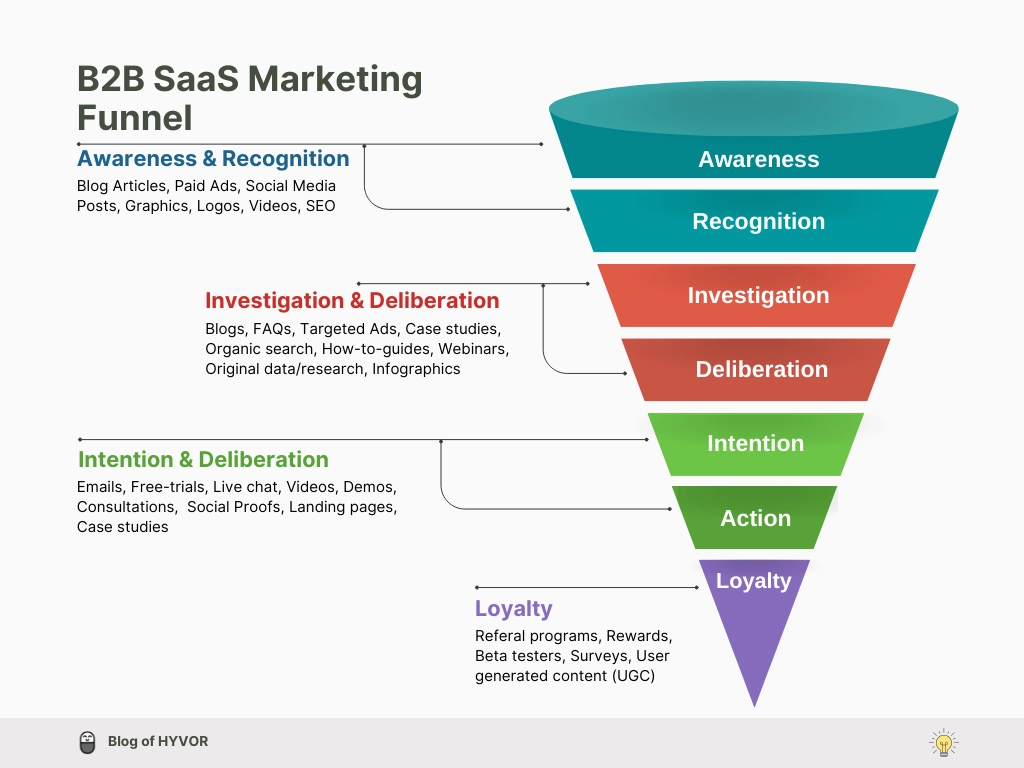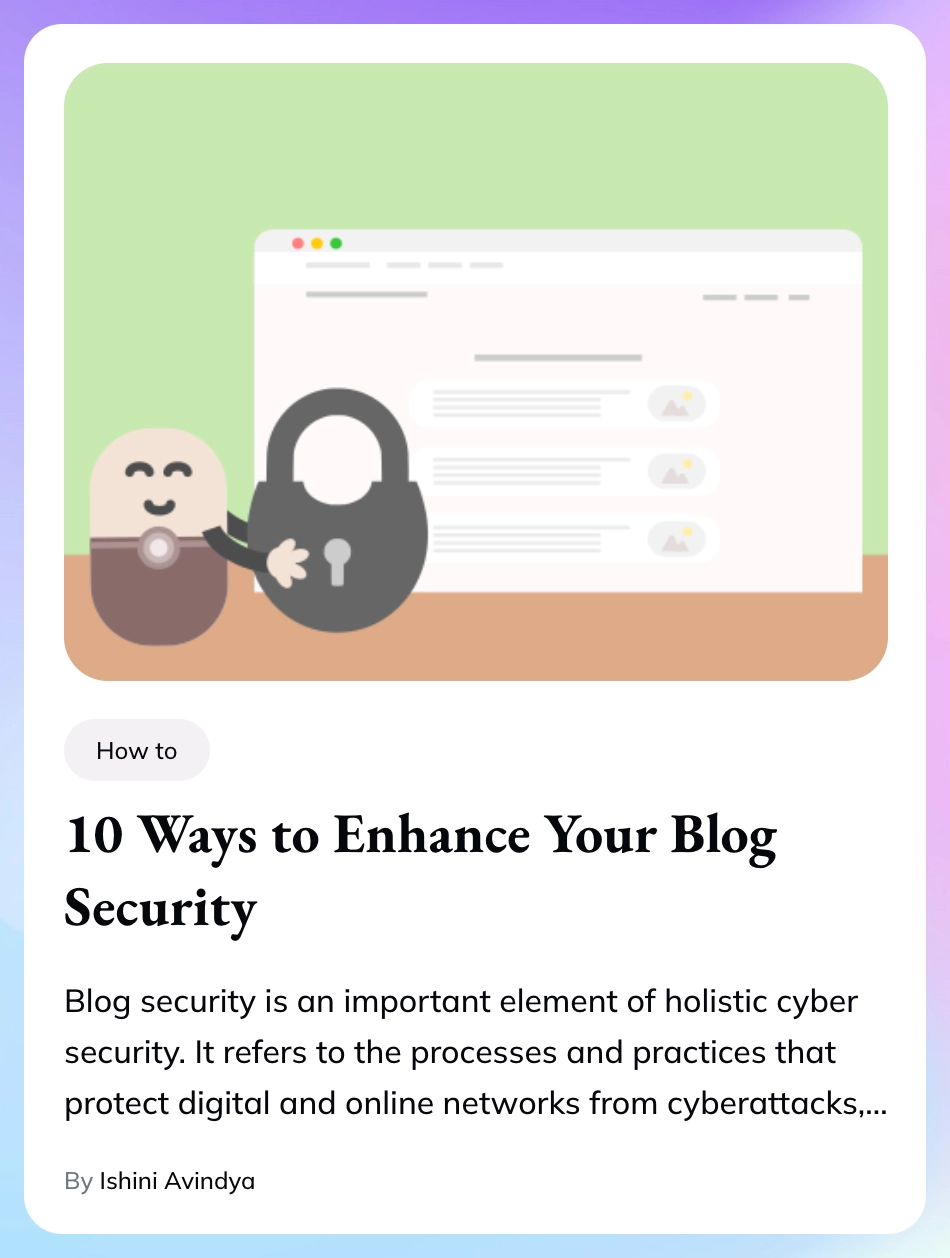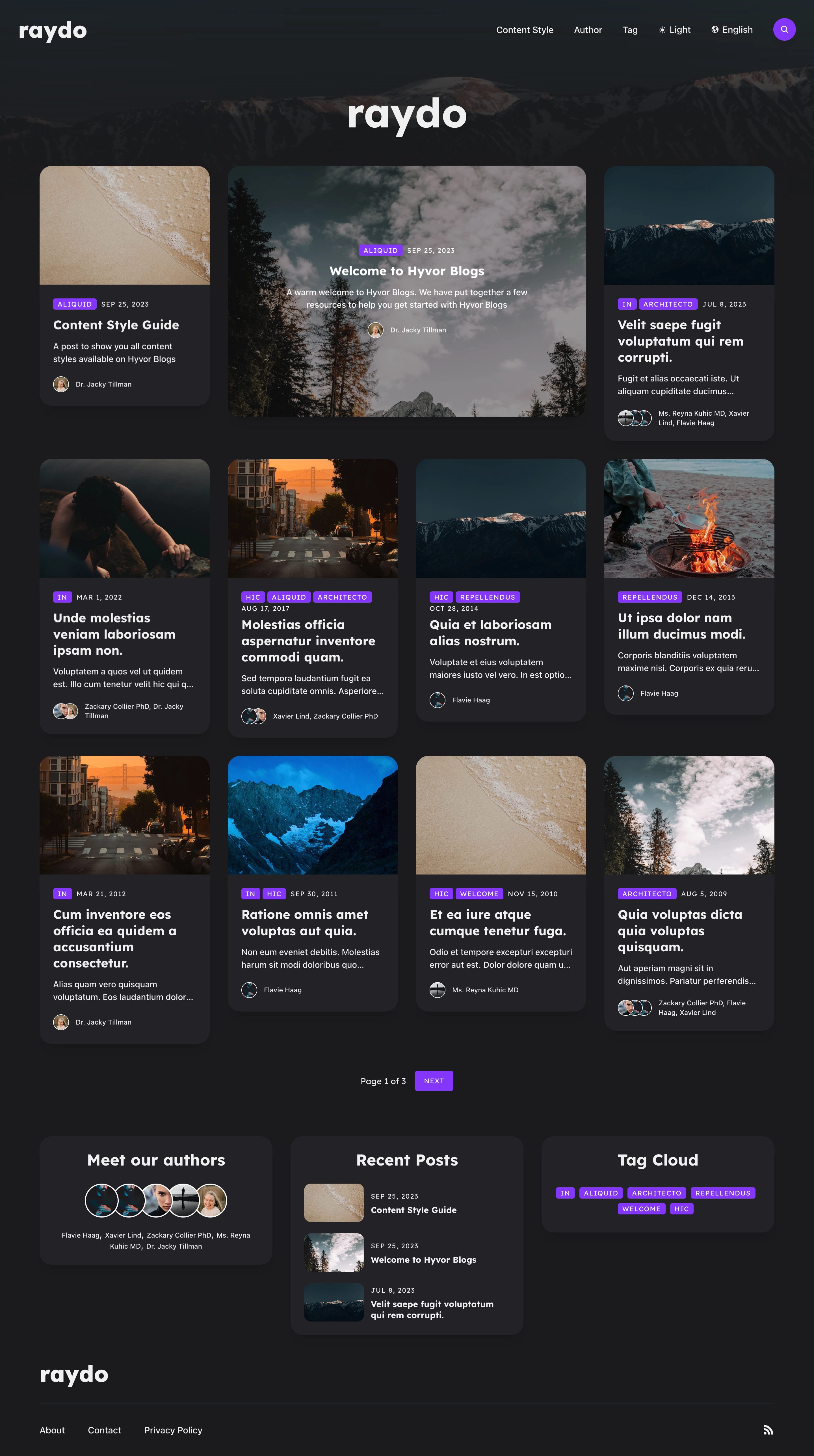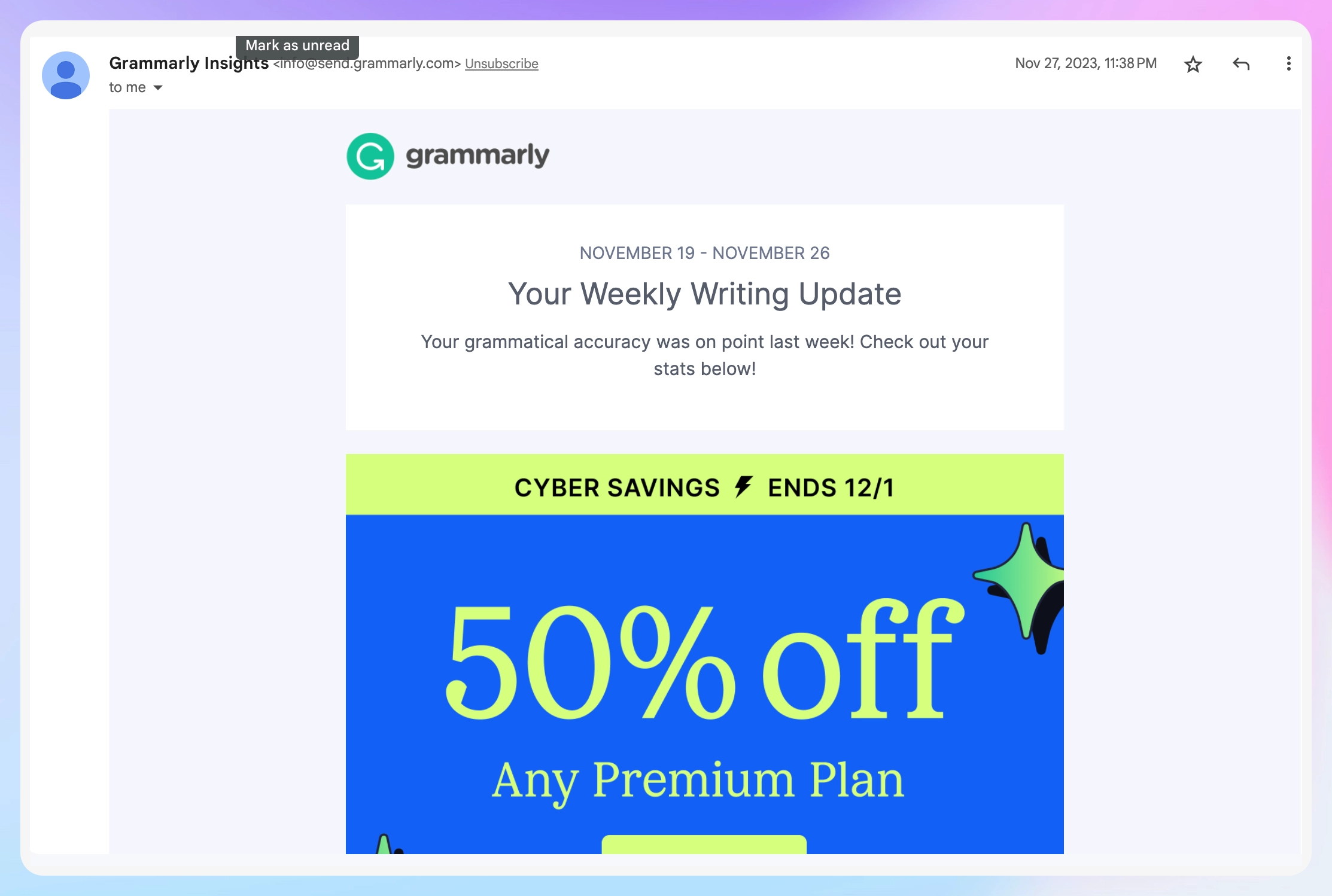In the rapidly evolving world of technology, where innovation is the cornerstone of success, B2B SaaS Marketing has emerged as a crucial force driving the growth of Software as a Service (SaaS) businesses. As we enter 2025, the landscape of SaaS B2B Marketing has undergone transformative shifts, necessitating a comprehensive guide that navigates the latest trends, strategies, and insights tailored to the unique challenges SaaS enterprises face.
This ultimate guide for SaaS businesses offers the most up-to-date and nuanced perspectives on B2B SaaS Marketing from what is B2B SaaS marketing to everything about B2B SaaS marketing. It equips industry leaders with the tools they need to thrive in this dynamic digital era. Let’s dive into the newest strategies, industry trends, and innovative approaches that define B2B SaaS Marketing in 2024.
Note that, in this article, users/customers are referred to as SaaS business customers.
B2B SaaS Marketing: Why?
To explain this very clearly, I’m using recent statistics on the SaaS market.

In a gist,
30,800 SaaS businesses in this world
The global SaaS industry is valued at $197 billion. A SaaS company has an average of 36,000 customers
The US houses 17,000 SaaS companies alone
An average organization uses 371 SaaS applications.
The SaaS industry has grown at the rate of 500% over the past years
Day by day, the SaaS business count is increasing drastically. On the other hand, the percentage of usage of SaaS applications has increased excessively over the past years. This is where the simple supply-demand principle comes in: demand goes low when the supply increases (when SaaS application availability is high). This is where you must market your SaaS product among all the other SaaS products. And this is why you need “B2B SaaS marketing”.
Thus, as a B2B SaaS product company, to keep your head up in this emerging competitive B2B SaaS market, you must stick with SaaS B2B marketing.
In other words, integrating B2B SaaS marketing is not merely a choice but a strategic necessity for businesses aiming to thrive in 2024. The unparalleled benefits of transformation in business operations, scalability and flexibility, cost-efficiency, real-time collaboration and accessibility, data-driven insights, customer-centric marketing, and adaptability position B2B SaaS marketing as a cornerstone for success in the modern business landscape.
B2B SaaS Marketing Strategies
B2B SaaS marketing strategies are dynamic and multifaceted approaches to promote and sell SaaS solutions to other businesses. In this intricate landscape, these strategies become the guiding force for businesses to navigate the complexities of the digital market. They comprise a blend of targeted tactics, personalized messaging, B2B SaaS branding, and technology-driven methods that collectively aim to reach and engage a B2B audience with precision and impact.
It is crucial to have a strong and well-suit B2B SaaS marketing plan when you compete with other SaaS businesses out there. Usually, to create a plan for anything, we need a sketch or a roadmap. When it comes to SaaS marketing, the “Marketing Funnel” comes as the roadmap. It provides a roadmap for acquiring, retaining, and maximizing the value of customers in a landscape characterized by subscription-based revenue and ongoing customer relationships.
B2B SaaS Marketing Funnel
In this guide, we have created a B2B SaaS marketing funnel as a roadmap for all B2B SaaS marketing strategies.

As the above infographic shows, there are 7 stages in this B2B SaaS marketing funnel. From the top to bottom,
Awareness & Recognition: How do customers find you? The top of the funnel is intended to capture the attention of customers searching for the products or services you provide and direct them to your website. It may also alert casual browsers to problems or remedies they were unaware of. Whatever problem your company solves, you should raise awareness about it before focusing on your solution. To accomplish this, you produce fundamental content that clearly and concisely conveys what you do. At this level, assets include blogs, paid ads, social media postings, graphics, SEO, and recognizable visuals like as logos and symbols.

Example blog post Example: The above article by “ABC (hypothetical SaaS company name)“ carefully understands users’ pain points of user blog security and answers them by giving suitable solutions: their SaaS product as the solution. So, simply, the user does not know much about what services ABC provides and what they look like but if that user is somebody from the blogging industry who is looking for blog security issues might move down the funnel to check out what this blog post author says.
Investigation & Deliberation: The middle-of-the-funnel material is more informative than promotional. It increases your customers' desire to cooperate with you by showcasing your particular expertise in a way that earns their trust. You can accomplish this by giving them blogs, videos, landing pages (homepages), and other resources that show how you can solve their problem. As they progress through the center of your funnel, you should start to build a relationship with them and sow the seeds for purchase.
At this stage, you might start a more personal relationship with permission-based marketing, such as an email or newsletter. Other assets at this level include FAQs, targeted ads, how-to manuals, case studies, webinars, research data, and infographics.
If you are more concerned about users’ privacy like us who do not collect user data without their consent, sell users’ data, or keep control over users’ data, you can use methods like email/newsletter marketing, how-to-manuals, webinars, research data, and infographics. I have dropped targeted ads here because they track all user’s every moment and their details. But you can use ads without collecting users’ data.
Your goal is to help the consumer conduct research about your company and consider the benefits and drawbacks of doing business with you.
Example: homepage of Hyvor Talk
Example: The above is the home page of Hyvor Talk. It positions Hyvor Talk as an authority on the subject (commenting platform) and answers many of the questions a consumer may need to answer to make an informed decision.Intention & Action: The real magic happens at the bottom of your funnel. You've meticulously managed your potential customer's journey, and now it's time to complete the deal. By now, your customer-to-be should have all of the information necessary to make an informed decision about doing business with you. They have most likely narrowed their options down to a few. All you need to do is provide an extra nudge to eliminate any remaining hesitation.
Free trials, special discounts, live chats, video demos, customer testimonials, and social proof are examples of assets that could be used at the bottom of your funnel.
You want to remove any uncertainty from a customer's mind so that your buyer is fully committed. Simultaneously, you begin to plant the seeds of brand loyalty, making your buyer feel even more confident in their selection.Make sure your bottom-of-the-funnel assets have a clear call to action that reminds them of the value they will receive and gives them an easy option to take the next step.

Example: homepage of Hostinger
Example: This is the homepage of Hostinger which has put up a deal for customers for a limited period (79% off of the original price). This certainly pursues customers to buy this great deal before it expires.Loyalty: After you've made a well-earned sale, you'll want to keep that customer and, ideally turn them into an ambassador for your B2B SaaS brand. Hopefully, your buyer views the time they spent navigating your funnel as an investment in your product or service. Nurture that investment by providing promos and content that make them feel like they are a member of an elite club. Show them how to make the most of their purchase and ensure that they are satisfied with the results.
Emails, surveys, how-tos, upgrades, loyalty programs, and early access to new items are all examples of post-funnel strategies. Using these outreach efforts, you may keep in touch and remind people why you're the greatest at what you do.
And that’s how your B2B SaaS marketing funnel should work.
Effective Strategies of B2B SaaS Marketing
In this guide, we are listing down effective strategies for B2B SaaS Marketing. All of these strategies are crucial for a strong marketing strategy. In simple words, these are a must.
B2B SaaS Content Marketing Excellence:
Educational Blogging: Create insightful blog content that addresses industry challenges, provides solutions, and showcases thought leadership. You can use blogging tools or SaaS CMS like Hyvor Blogs to host and manage your blog in content marketing so that you only have to focus on the quality of your content, every other thing like SEO, blog themes, hosting, etc is taken care of by Hyvor Blogs. Here is an example demo blog created using Hyvor Blogs. See more.

Webinars and Workshops: Conduct webinars to demonstrate the value of your SaaS product and offer in-depth workshops to educate your audience.
Data-Driven Personalization:
Customer Segmentation: Utilize data to segment your audience based on demographics, behavior, and preferences.
Personalized Campaigns: Tailor your marketing campaigns to address the specific needs and pain points of different customer segments.
Account-Based Marketing (ABM):
Identify High-Value Accounts: Prioritize and target high-value accounts with personalized campaigns.
Engage Decision-Makers: Craft content and strategies that resonate with key decision-makers within target companies.
Leverage Marketing Automation:
Lead Nurturing Sequences: Set up automated email sequences to nurture leads through the marketing funnel.
Behavior-Based Triggers: Implement triggers based on user behavior to send targeted and timely messages.
Social Media Engagement:
LinkedIn Outreach: Utilize LinkedIn for networking, thought leadership, and direct outreach to decision-makers.
Community Building: Foster a community around your brand on platforms like Twitter and Reddit to engage with your audience.
Customer Testimonials and Case Studies:
Showcase Success Stories: Highlight customer success stories through testimonials and in-depth case studies.
Build Credibility: Use real-world examples to build credibility and demonstrate the tangible benefits of your SaaS solution.
Free Trials and Freemium Models:
Free Trials: Offer free trials to allow potential customers to experience the value of your SaaS product.
Freemium Models: Introduce freemium models with basic features for free, encouraging users to upgrade to premium functionalities.
SEO and SEM Strategies:
Optimized Landing Pages: Ensure your website and landing pages are optimized for relevant keywords.
Paid Advertising: Use targeted Google Ads to reach businesses actively searching for SaaS solutions.
Partnerships and Collaborations:
Strategic Alliances: Form strategic partnerships with other businesses to expand your reach.
Affiliate Marketing: Establish affiliate programs to encourage others to promote your SaaS product.
Continuous Analytics and Optimization:
Performance Tracking: Regularly analyze the performance of your marketing campaigns using analytics tools.
A/B Testing: Implement A/B testing to optimize various elements of your campaigns for better results.
Customer Retention Programs:
Proactive Support: Offer proactive customer support to address issues before they become problems.
Feature Updates: Communicate and showcase new features to existing customers, ensuring they fully utilize your SaaS product.
By combining these strategies and adapting them to your specific business and industry, you can create a robust B2B SaaS marketing plan that effectively attracts, engages, and converts potential customers while retaining and nurturing existing ones.
B2B SaaS Marketing Agencies vs. In-House Marketing
There are two types of marketing that SaaS companies tend to go with.
B2B SaaS Makreting Agencies
B2B SaaS In-House Marketing
A recent study showed that 69% of junior and mid-level SaaS companies are seeking in-house marketing compared to just 11% seeking to work with B2B SaaS marketing agencies.
I know at a stage every SaaS organization sits on the fence about whether to choose in-house marketing to marketing agencies.
Specialized B2B SaaS marketing agencies bring expertise and industry knowledge, helping businesses navigate the complexities of the digital landscape. Selecting the right agency involves considering factors such as industry experience, track record, pricing, and alignment with business goals. A collaborative and strategic partnership is crucial if you choose to go with SaaS marketing agencies.
However, your decision to choose either of the above choices depends on your business requirements, budget, etc. Here is a comparison between choosing in-house marketing and B2B SaaS marketing agencies.
Using B2B SaaS Marketing Agencies | Using In-House B2B SaaS Marketing |
High expertise | High brand familiarity |
Higher capabilities compared to in-house marketing | High accessibility |
Software and tools abundance | Complete control |
Diverse speciality | Talent recruitment takes time (sometimes trial & error) |
Too costly than in-house marketing, $20,000 - $200,000 / year | Employee costs |
Chances of scalability | Software expenses |
Multiple clients, maybe your SaaS competitors | Low capabilities compared to marketing agencies |
Less control | Employee turnover |
Scalability issues | |
Costs $250,000 / year |
B2B SaaS Marketing Challenges
When it comes to B2B SaaS marketing, there are challenges that you may face.
Converting Freemium Users to Paid Users
Converting freemium users to paid users is the biggest challenge in B2C SaaS marketing: and so is B2B SaaS marketing. However, the rate of difficulty in this is quite low in B2B SaaS marketing compared to B2C SaaS marketing.
The solution for this is to make your free plan more robust or remove your free plan if possible. As an experienced SaaS company, we had a free plan in the Hyvor Talk - commenting system at the very beginning. But, there were so many free plan users, and freemium to paid conversion was very low which made issues with profits. Therefore what we did was remove the free plan letting existing free plan users as freemium (otherwise it would be unfair for customers). And that the removal of the free plan thereafter brought us, potential business customers, for Hyvor Talk. But don’t give up just yet. Going with free plans has worked as a business model for SaaS brands like Spotify, Dropbox, and HubSpot. Like I said before, everything depends on your product: product dependable.
Using email marketing strategy, you can also market your paid plans to freemium users. Grammarly does this. Maybe you have already experienced it if you are using the Grammarly free version.
They also give discounts for upgrading to premium plans. Here is an email I received from Grammarly when I was using its free plan.

B2B brands rarely adopt the freemium model. You have seen Saas products that have B2B and B2C both have free plans for B2C but not for B2B or do no free plans for both B2B & B2C? About 86% of B2B brands choose free trials over freemium. This makes sense since freemium plans are only achievable when you can keep your sales, marketing, and product expenditures as low as possible. That's difficult to do when targeting enterprise customers.
HubSpot remains one of the few B2B firms that offers a freemium plan. However, their concept resembles a "freemium trial." Essentially, they set constraints on how freemium users use their products. This helps balance things out.
Differentiate Your Product
In this very present business organizations are using an average of 130 Saas products, thus the demand is huge. But the problem is, there are so many SaaS products for the same niche. In that case, make your product stand out among other similar SaaS products.
The one and only to face this challenge is to identify your SaaS product’s uniqueness; and how it is different from other similar existing products. In other words, unique features of your SaaS product. All you need to do is market the uniqueness of your product.
Make sure your target audience understands your unique features and value proposition. In this case, SaaS content creation is incredibly useful (in the B2B digital marketing sector). You should do this by putting yourself into B2B customers’ shoes. Usually, customers want to:
Read blogs
Download ebooks
Watch tutorial videos
Listen to industry-related podcasts
See the reviews about your product, etc.
And that is where you are going to market your SaaS product’s unique features/ uniqueness. This is very important for the bottom-of-the-funnel content.
It also helps to speak to your customers: the early adopters and loyal customers in particular. Figure out why they chose your product or why they should choose your product. This eliminates assumptions and shows what aspects of your product or company your users actually value.
Scaling Marketing Efforts
Scaling marketing efforts is a common difficulty for growing SaaS organizations. As your company grows, you must ensure that your marketing plan expands alongside it. Sometimes the goal is to achieve this without considerably increasing the headcount.
What you can do is, choose marketing automation, therefore choosing marketing automation tools like HubSpot, Marketo, Zendesk, and GetResponse. Marketing automation will help you streamline and automate lead generation, email marketing, and even sales.
You will have more data to work with as your SaaS company grows. So what? Upgrading your data management platforms can help you store and analyze data more effectively. and that will make sure you can create more targeted and data-driven marketing campaigns. With the use of some standard templates in these marketing automation tools, your teams can perform their responsibilities quickly and easily. These standard templates will also help to keep everyone on the same page.
The below illustration shows how SaaS framework elements are related to each other.

All of your marketers, salespeople, and customer care representatives should have the same brand voice and tone.
And the other option is to outsource some of your software marketing activities. For example, outsourcing marketing tasks such as link-building to a credible link-building service can help you scale faster. And that would be more efficient than forming an internal link-building team.
Customer Retention
Customer retention is a metric used by businesses to track client loyalty over time and assess overall success. To increase customer retention, businesses will use a variety of strategies to lower the number of customers lost in a particular period and improve their experiences to ensure that they remain loyal to the company. Such as,
Create an impressive onboarding experience - When your consumer makes their first purchase, you have the potential to make a lasting impression, so make sure your onboarding process runs well. Leave a very good impression.
Provide personalized customer experiences - Every customer has different needs, or their needs and requirements are different from each other. So, you have to give them the best personal customer experience according to their needs and requirements. And that helps to build strong customer relationships. According to Hashgrowth, 99% of marketers believe personalization improves customer connections, with 78% citing a "strong" or "extremely strong" impact. In addition, 90% of U.S. consumers find personalized marketing content ‘somewhat’ to ‘very appealing’.
Build trust with your customers - As same as in our day-to-day life, trust takes time to build. And you cannot take users for granted. According to the Edelman Trust Barometer, When it comes to making purchasing decisions, 81% of customers consider trust to be an important component. A customer's likelihood of doing business with a brand increases as their trust in it grows. However, clients are naturally skeptical. The same study found that only 34% of customers are trustworthy. In a separate but related study, 42% of customers say they do not trust brands, and 70% are skeptical of their advertising claims. In other words, client trust in business must be earned.
Implement a customer feedback loop - Obviously, you cannot improve your SaaS business unless you get customer feedback. Nothing matters if you do the best things to improve your product if your customers don’t love your product. Therefore, a customer feedback collection loop should be created. This will help you to collect, analyze, and distribute customer reviews. To do that you can use surveys, ask customers to participate in user testing groups, or if you use online chat support or call system, allow customers the chance to give feedback after each and every call or interaction.
Maintain a customer communication calendar - Even if your customers don't provide feedback, your team should be proactive in communicating with them. Consider using a communication calendar to track customer interactions and identify opportunities to upsell and cross-sell. A communication calendar is a graphic used to track client inquiries. It notifies you when a customer last contacted you and when existing customers haven't communicated with your brand.
For example, when your customer’s free trial or subscription is about to expire, you can send a reminder email.
Start a customer education program - A customer education program displays a long-term commitment to your client base. Under this program, your company develops a variety of client self-service capabilities, including a knowledge base and a community forum. Then, users use these capabilities to find solutions to service issues before contacting your support personnel. This program might go beyond your products and services.
Start a customer retention program - A customer retention program combines numerous types of strategies. There is a program for almost every business case. You can do the following things in this case: adopt customer service tools, apologize when you make mistakes, inspire with a mission, empower customers with convenience, leverage personalization, speak to your customers, create a divide between you and your competitors, use subscriptions to bolster the experience, use experiences to elicit positive feelings, and more. We will come up with a different in-detailed guide about this.
Future of B2B SaaS Marketing
Before we look into the future of B2B SaaS, let’s see emerging trends in B2B SaaS marketing.
Emerging Trends of B2B SaaS Marketing
These are the latest trends in B2B SaaS marketing.
AI and Machine Learning for Personalization and Automation
Account-Based Marketing (ABM) Strategies
Video Marketing and Interactive Content
Privacy-Centric Marketing in the Post-Cookie Era
Sustainability and Social Responsibility
Data-driven decision-making in SaaS Marketing
Future B2B SaaS Marketing Trends
As we look beyond the current horizon, the future of B2B SaaS marketing promises to be shaped by several transformative trends:
AI-Driven Hyper-Personalization:
Advanced AI algorithms will revolutionize personalization efforts, enabling hyper-personalized marketing experiences tailored to individual business needs.
Predictive analytics powered by AI will become more sophisticated, providing deeper insights into customer behaviors and preferences.
Voice-Activated Interfaces:
The rise of voice-activated devices will necessitate a shift in marketing strategies to optimize content for voice search, fundamentally altering how businesses seek and consume information.
Continued Rise of Immersive Technologies:
Augmented Reality (AR) and Virtual Reality (VR) will see expanded applications in B2B SaaS marketing. From interactive product demonstrations to immersive training experiences, these technologies will redefine engagement.
Sustainability Messaging and Ethical Data Practices:
B2B SaaS marketers will increasingly focus on green technology messaging, aligning with a global shift towards sustainable and eco-friendly solutions.
Ethical data usage and transparent data practices will be critical, ensuring businesses prioritize customer privacy and data security.
Interactive Content Formats:
Live videos, webinars, and other interactive content formats will take center stage, offering real-time engagement opportunities and fostering a deeper connection with B2B audiences.
You can use these trends in your upcoming marketing strategies as time goes on. It is better to include AI in your marketing strategies because there is a future with AI for sure.
Conclusion
In this comprehensive guide to B2B SaaS marketing, we've delved into the intricacies of strategies, branding, and the dynamic landscape shaping the industry. In this final section, it's crucial to reflect on the ever-evolving nature of the B2B SaaS landscape. The journey doesn't end here; it's an ongoing process of adaptation, innovation, and customer-centricity. As technology advances, customer expectations shift, and new challenges arise, B2B SaaS businesses must remain agile and responsive.
The B2B SaaS marketing landscape offers immense opportunities for those willing to explore, innovate, and connect authentically with their audience. By staying informed, embracing change, and adopting a proactive mindset, businesses can not only survive but thrive in the dynamic world of B2B SaaS marketing.
In conclusion, the journey continues, and the possibilities are boundless for those ready to navigate the exciting and ever-evolving landscape of B2B SaaS marketing.
Related Readings

Comments